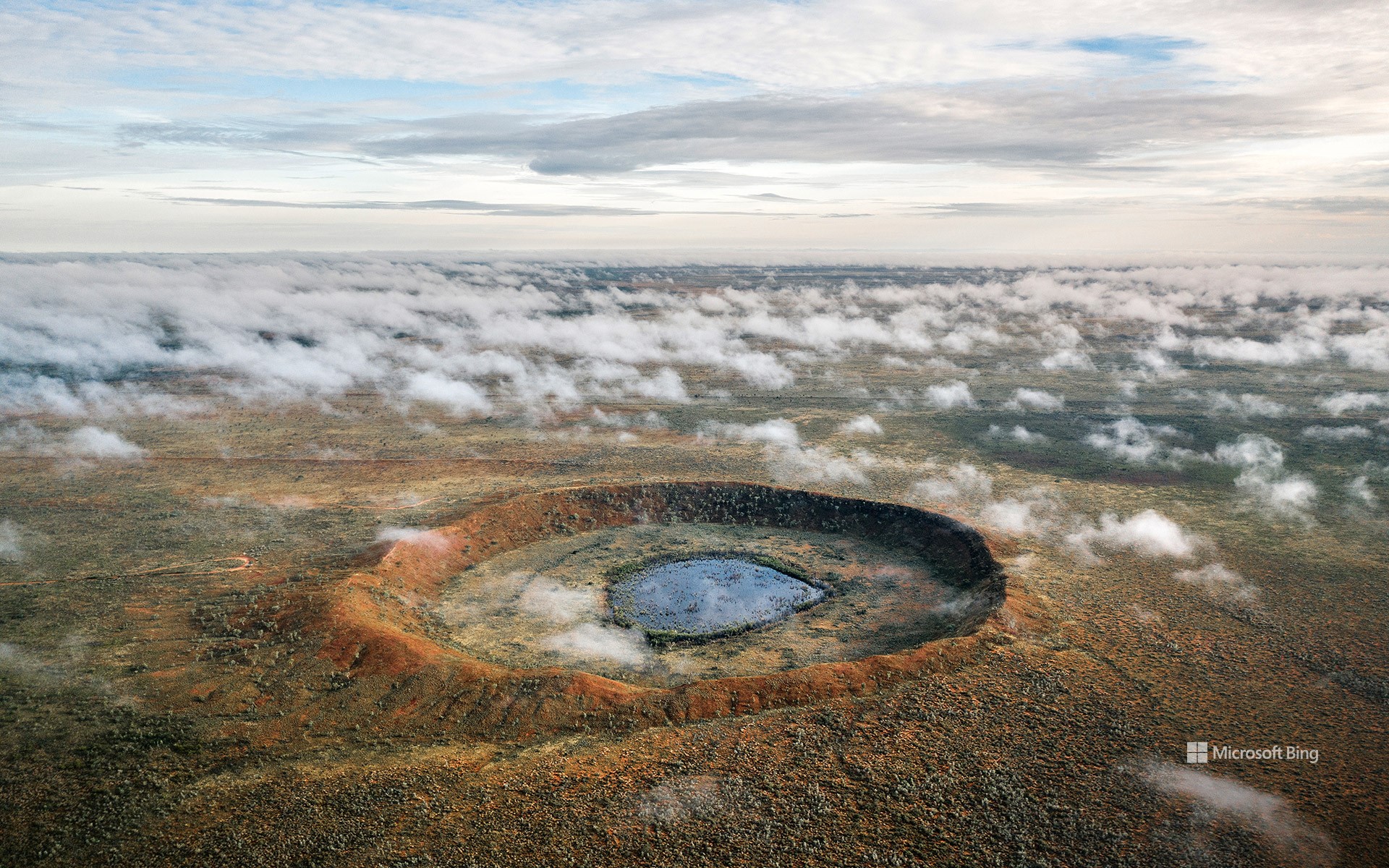沃尔夫溪陨石坑, 澳大利亚 Wolfe Creek Crater, Australia (© Abstract Aerial Art/Getty Images)

沃尔夫溪陨石坑, 澳大利亚 Wolfe Creek Crater, Australia (© Abstract Aerial Art/Getty Images)
是谁击中了地面? Rock-solid defense
小行星日
地球表面每一道因陨石撞击而留下的伤痕,都讲述着一个关于宇宙的故事,从导致恐龙灭绝的小行星,到遍布全球却鲜为人知的陨石坑。小行星日正是为了提醒人类关注这些来自太空的访客,以及它们可能带来的潜在威胁。该纪念日设立于2015年,受到联合国支持,以纪念1908年6月30日发生在西伯利亚通古斯河附近的通古斯大爆炸。这场爆炸摧毁了超过800平方英里的森林,所释放的能量相当于10至15兆吨TNT炸药。自那以后,科学家们通过研究亚利桑那州的巴林杰陨石坑、加拿大魁北克的马尼库阿甘陨石坑等地,深入探索了天体撞击对地球的影响。
如今日图片所示,位于澳大利亚西部的沃尔夫溪陨石坑,由一颗估计重达14000多吨的陨石撞击地面而形成。该陨石坑直径约为2,871英尺,坐落于偏远的沃尔夫溪陨石坑国家公园之中。园区内平坦的沙漠草原与干旱平原衬托出陨石坑边缘的醒目轮廓。如今,游客可沿着陨石坑边缘徒步,亲身体验这一宇宙撞击留下的印记,同时了解它在科学研究和澳大利亚原住民文化中所具有的重要意义。
Asteroid Day
Each scar on Earth from a meteorite impact tells a story—from the asteroid that wiped out the dinosaurs to the lesser-known craters that dot the planet. Asteroid Day highlights ongoing research into asteroids and the potential threats they pose. Started in 2015 and backed by the United Nations, this day marks the anniversary of the Tunguska event—a massive explosion that occurred in Siberia on June 30, 1908. This explosion flattened over 800 square miles of Siberian forest near the Tunguska River. The blast released energy equal to 10–15 megatons of TNT, a standard measure of explosive force. Since then, craters like Arizona's Barringer, Quebec's Manicouagan, and others have helped scientists study what happens when space rocks hit Earth.
Wolfe Creek Crater in Western Australia, pictured here, was created by a meteorite estimated to have weighed over 14,000 tons. The crater is about 2,871 feet in diameter and sits within Wolfe Creek Meteorite Crater National Park, a remote protected area. The park's flat plains and desert grasslands make the crater's rim especially visible. Today, visitors can walk along the rim and learn about its significance to both science and local Indigenous communities.